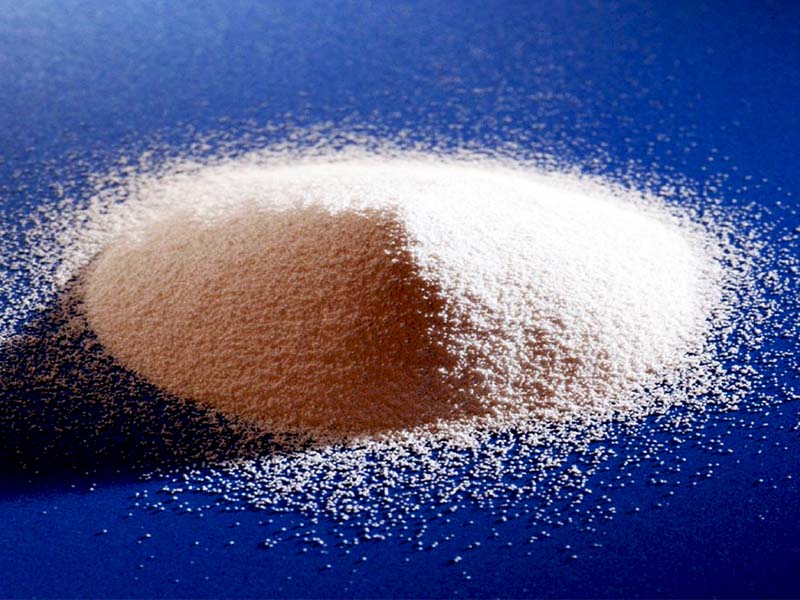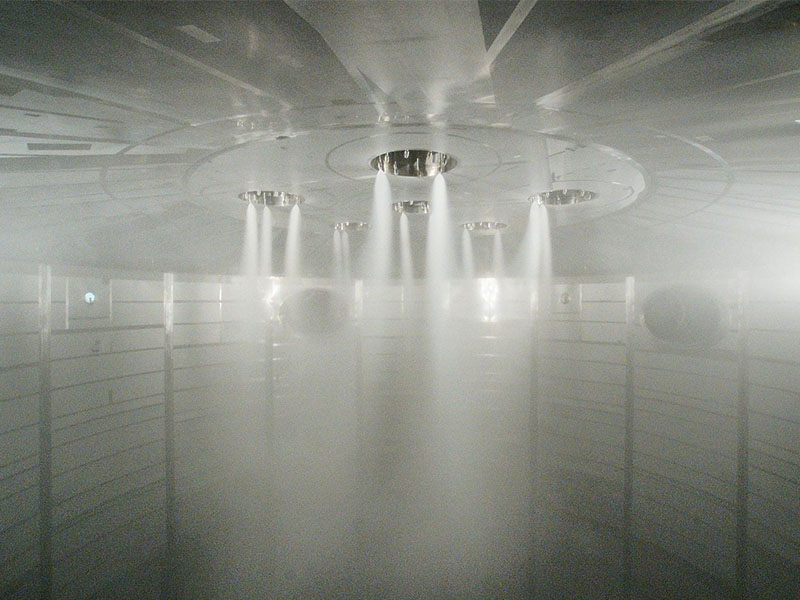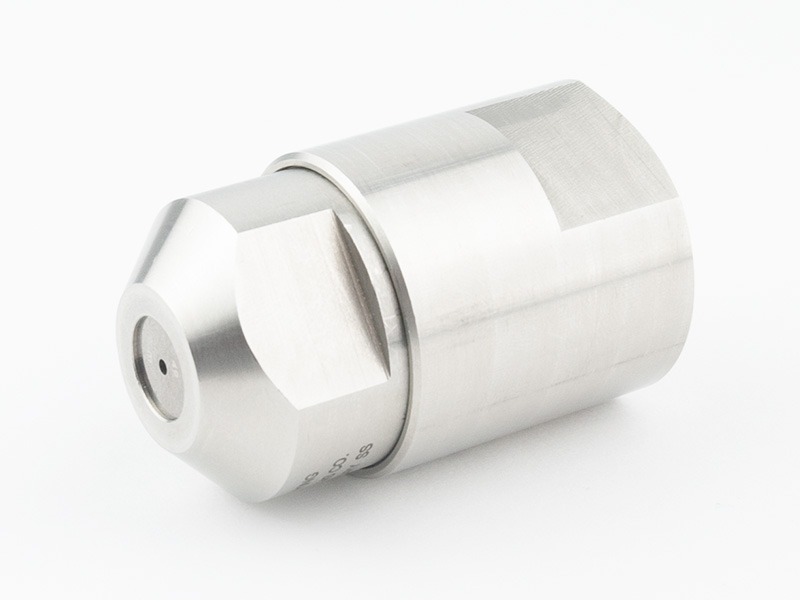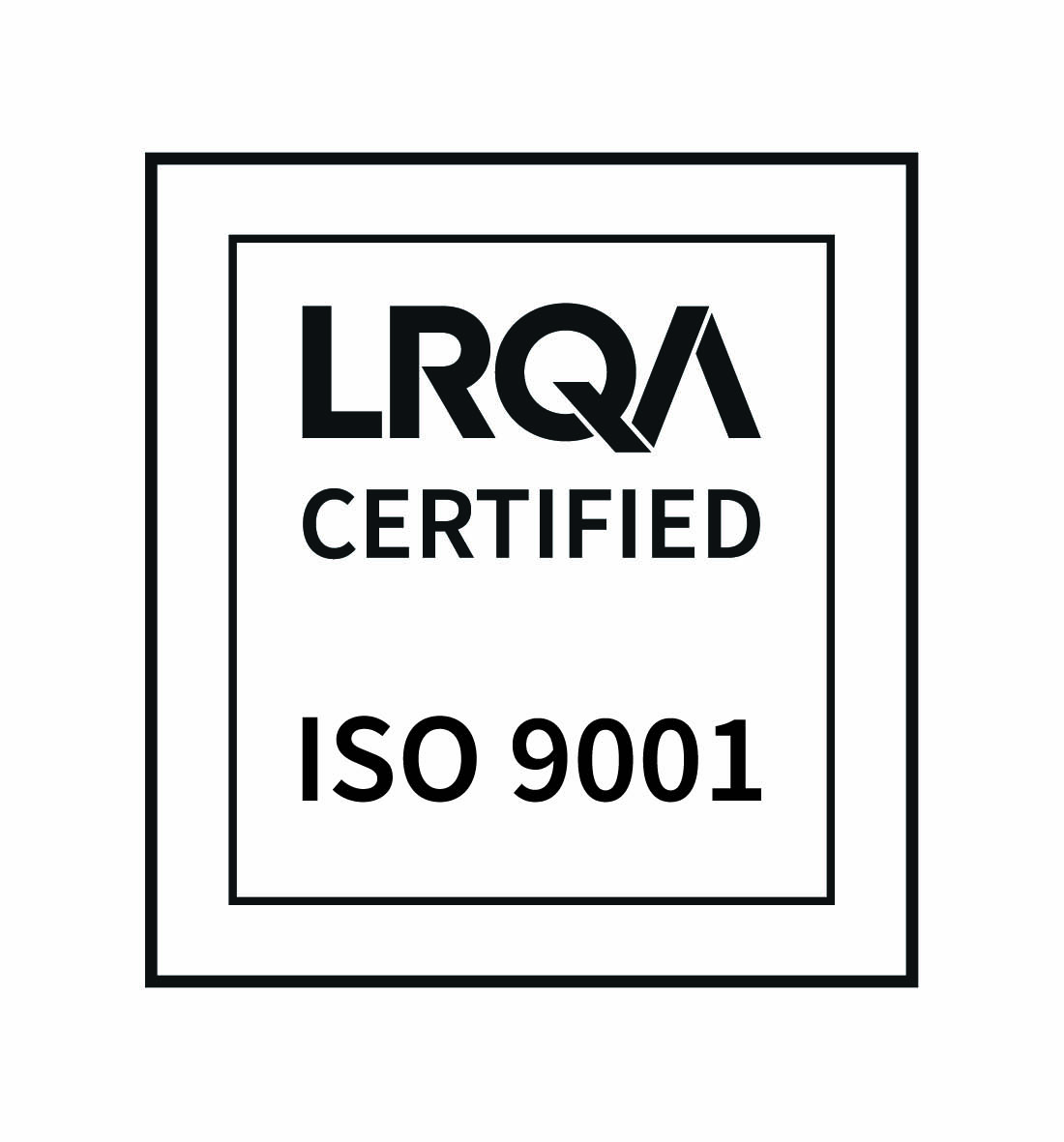Powder
Many spray drying operations produce spherical particles while others result in non-spherical particles. Particles may be hollow or solid. Non-spherical particles are characterized by their aspect ratio, which is the ratio of their longest dimension to their shortest dimension.
Learn more about spray Drying



Powder Size
It is important to differentiate between droplet size and particle size because the two are generally not the same. The relationship between the mean size of liquid droplets and dried particles is not consistent and no general statements can be made on this subject. The methods used to measure the sizes of dried particles include sieving, microscopy, sedimentation and laser techniques.
Pressure spray nozzles can produce particles ranging in size from 20 to 600 microns, depending on the nozzle type, feedstock properties and operating conditions.
Size Distribution
The size distribution of dried particles is generally narrower than the size distribution of atomized liquid particles. Rotary atomizers produce more uniform particle sizes compared to pressure atomizers.
Bulk Density
Bulk density is the weight of dried powder per unit volume. This is a critical factor for most spray drying operations since it determines the size (or fullness) of containers and influences the handling and shipping costs. Bulk density is constantly monitored during the spray drying process.
Factors Affecting Bulk Density
- Increasing feed rate increases bulk density if the residual moisture increases;
- If increasing feed temperature leads to the production of spherical droplets instead of ‘threads’, bulk density increases;
- For easily atomized feeds, increased temperature can lower bulk density;
- Bulk densities often increase on powder cooling;
- A coarse homogenous powder has a lower bulk density than a fine homogenous powder;
- A powder with a wide distribution of particle sizes will have a higher bulk density than a powder with a narrower distribution of particle sizes.
- Increasing feed solids generally increases bulk density.
- Feed aeration decreases bulk density.
- Feed suspensions give higher bulk densities than feed solutions.
- Increasing residual moisture content increases bulk density.
- Increasing inlet air temperature decreases bulk density.
- Reducing the outlet air temperature increases residual moisture and therefore increases bulk density.
- Co-current dryers produce powders with lower bulk densities than counter-current dryers.
- Mechanical handling of powders that reduces particle size by attrition and increases bulk density.
Agglomeration
It is sometimes desirable to have product particles that are larger than those produced by a single stage spray drying process. Agglomeration is the process of enlarging particles by getting them to stick to each other. Agglomerated particles may have improved solubility, higher bulk density, improved flow properties and less dust.
Occasionally, the second stage of a two stage dryer is used to agglomerate product particles. Since the particles leaving the first stage are still sticky, they will bond with other particles during the second stage drying.
Some installations spray wet particles from the first stage with additional feed in the second stage. The fresh feed softens the surface of the particles and allows them to grow. This process is called “instantizing” or “re-wetting agglomeration”.
Most dryer operations include the recycling of fine particles fines captured by the separation equipment into the spray zone. Returning fines promotes an agglomerating effect, leading to the production of a powder that is coarser, freer flowing and “dust free”.
Get in touch with Erik!
Do you have any questions regarding our Spray Drying Nozzles, Bodies & Adapters or Specialty components? Don’t hasitate to call or send an e-mail!

Erik Sanders
Sales Manager
Raca International
Contact
- Raca International BV
- Arnoudstraat 22
- 2182 DZ, Hillegom
- The Netherlands
- +31 (0) 252 22 70 70
- info@raca.nl

Raca International BV is a supplier of replacement nozzles for major brands. The product range includes spray nozzles for the production of powders, produced with high pressure nozzle atomization. All our nozzles are manufactured in our factory with the highest grades of raw material tungsten carbide.


